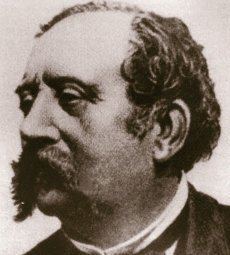Nationality French Doctoral students J.J. Forst | Name Charles Lasegue | |
 | ||
Born 5 September 1816
Paris, France ( 1816-09-05 ) Died 20 April 1883(1883-04-20) (aged 66)
Paris, France Fields Philosophy, Medicine, Psychiatry Institutions Consultant Physician at the Prefecture de Police
Physician at Pitie-Salpetriere Hospital
Professor of Clinical Medicine at Hopital Necker | ||
Other notable students Charles Baudelaire | ||
Ernest-Charles Lasègue ([lasɛɡ]; 5 September 1816 – 20 March 1883) was a French physician born in Paris.
Contents

In 1847 he received his medical doctorate from the University of Paris, and during the following year was sent by the French government to southern Russia in order to conduct research of an epidemic of cholera. Afterwards, he worked as a physician at the Salpêtrière, Pitié and Necker hospitals in Paris. In 1869 he was appointed professor of clinical medicine at Hôpital Necker, a position he maintained until his death in 1883.
Lasègue originally studied to become a philosopher, but changed to medicine when he was inspired by a lecture given by internist Armand Trousseau (1801–1867). He later became an assistant and collaborator of Trousseau's, also serving as his chief clinician for a period of time during the 1850s. Lasègue published well over 100 works, with eighteen of them being co-written with Dr. Trousseau.
Lasègue was versatile in many facets of medicine. In the 1860s he taught classes on nervous and mental illnesses. He considered the disciplines of physiology and psychiatry to be complementary to each other, and was particularly interested in psychosomatic disorders. He described one of the earliest accounts of anorexia nervosa, and also conducted research involving delusions of persecution.
As a psychiatrist, he believed that by knowing a patient's history, the cause that created his or her mental imbalance could be discovered. He emphasized the role of parental attitudes and family interactions to be of supreme importance. With Jean-Pierre Falret (1794–1870), he introduced the concept "folie à deux" to describe the coincidental appearance of psychotic symptoms in family members or closely associated persons who share the same living space. This concept is sometimes referred to as the "Lasègue-Falret syndrome".
In 1871 he was made a knight of the Legion of Honour; in 1876 he was elected as a member of the Académie Nationale de Médecine.
